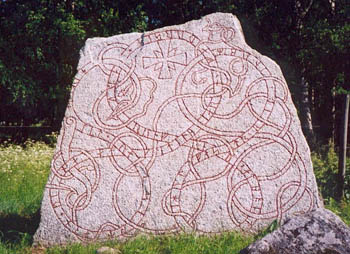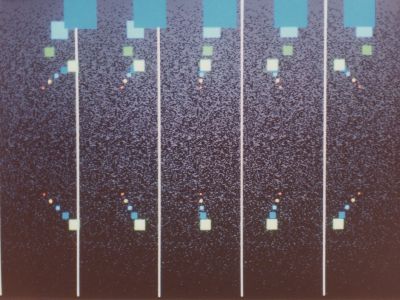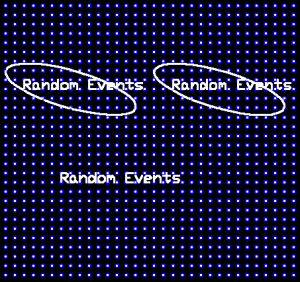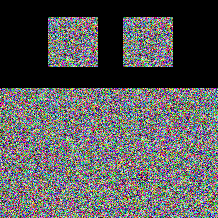26 Character Masiliana 700BC
|
Numerics Number Meaning Numerical Entanglement |
|
26 Character Masiliana 700BC |

24 Character runic AD |


Hebrew: 22 Letters, 27 numerical Characters Hebrew: Alpha characters are the same as numerical characters. |



 In 1990 I made stereoscopic pictures, by using an ordinary camera.
First by taking a picture; then displacing the camera left or right about three inches (the distance of human eyes)
and taking another picture. I developed my own viewer to see the two slides. The viewer was at the
reception desk of KHSL for visitors to see while they waited. My viewer was held together with rubber bands,
and people would have to face the sun-filled window to see beutiful 3-D sceens. Slides are so vivid and realistic
when compared to pictures. When combined with the 3-D effect it is no wonder that guests were fascinated.
To visitors, they were just pretty sceens. But to me, there was more.
In 1990 I made stereoscopic pictures, by using an ordinary camera.
First by taking a picture; then displacing the camera left or right about three inches (the distance of human eyes)
and taking another picture. I developed my own viewer to see the two slides. The viewer was at the
reception desk of KHSL for visitors to see while they waited. My viewer was held together with rubber bands,
and people would have to face the sun-filled window to see beutiful 3-D sceens. Slides are so vivid and realistic
when compared to pictures. When combined with the 3-D effect it is no wonder that guests were fascinated.
To visitors, they were just pretty sceens. But to me, there was more.
 I then wrote a computer program to display stereoscopic effects using ONE picture...
I then wrote a computer program to display stereoscopic effects using ONE picture... OK, getting back to random numbers...
OK, getting back to random numbers... Visually superimpose the two squares by crossing your eyes. You will see a third square that is closer to you.
Without loosing focus, carefully notice the larger section below. And now see the "hidden" events.
(It happens to be another square, but I could have made it bicycles or trees or anything.)
What your eyes can not see, your brain CAN see.
The very act of consciously noticing or selecting random events changes them in your brain.
Making the events no longer "random".
In this simple example a computer can easily detect this, just
as the human brain does.
A larger computer can detect more complex mappings and transformations: Something commensurate with daily events.
Such anomalies would not be "inspirational". They would be necessarily logical in a statistical sence.
Visually superimpose the two squares by crossing your eyes. You will see a third square that is closer to you.
Without loosing focus, carefully notice the larger section below. And now see the "hidden" events.
(It happens to be another square, but I could have made it bicycles or trees or anything.)
What your eyes can not see, your brain CAN see.
The very act of consciously noticing or selecting random events changes them in your brain.
Making the events no longer "random".
In this simple example a computer can easily detect this, just
as the human brain does.
A larger computer can detect more complex mappings and transformations: Something commensurate with daily events.
Such anomalies would not be "inspirational". They would be necessarily logical in a statistical sence.

|

|